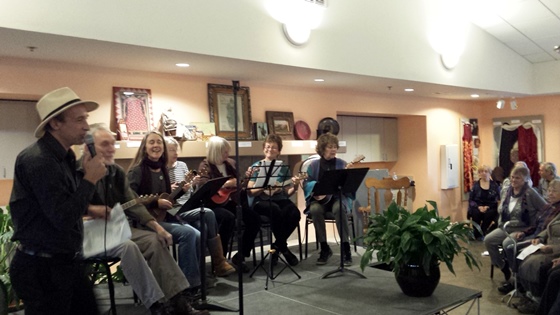||| FROM SCIENCE DIRECT || Re-posted at request of Orcasonian reader
Abstract
Online short-term rental (STR) platforms such as Airbnb have grown spectacularly. We study the effects of regulation of these platforms on the housing market using a quasi-experimental research design. 18 out of 88 cities in Los Angeles County have severely restricted short-term rentals by adopting Home Sharing Ordinances. We apply a panel regression-discontinuity design around the cities’ borders. Ordinances reduced listings by 50% and housing prices by 2%. Additional difference-in-differences estimates show that ordinances reduced rents also by 2%. These estimates imply large effects of Airbnb on property values in areas attractive to tourists (e.g. an increase in house prices of 15% within 2.5km of Hollywood’s Walk of Fame).
1. Introduction
Short-term housing rentals (STRs) have become very important due to the rise of online STR-platforms, such as Airbnb, which provide opportunities for households to informally offer accommodation to visitors. The surge in popularity of STR-platforms has led to substantial opposition because of a decrease in housing affordability (Samaan, 2015, Sheppard, Udell, 2016), unfair competition, and illegal hotelization (CBRE, 2017). Negative externalities (e.g. noise, reduction in perceived safety) due to the presence of tourists in residential buildings are also frequently mentioned (see e.g. Lieber, 2015, Williams, 2016, Filippas, Horton, 2018).
Local governments around the globe have responded quite differently towards regulating STRs. Most cities have not significantly regulated these platforms, but a limited number of cities have recently put severe restrictions in place. Berlin, for instance, requires STR-hosts to occupy the property for at least 50% of the time (O’Sullivan, 2016). San Francisco imposes a 14% hotel tax (i.e. a Transient Occupancy Tax) and a cap of maximum 90 rental days per year (Fishman, 2015). Amsterdam even imposes a maximum cap of 30 rental days per year as of 2019.
In this paper, we aim to measure the impact of Airbnb, by far the largest STR-platform, on housing markets. We focus on the effects of policies that restrict the market for STRs. There are arguably three main mechanisms of how regulation of short-term renting impacts property markets:
1.Efficient use effect. Short-term rentals generate income from idle space, increasing value due to additional income opportunities. Moreover, residential properties can now be used by their most profitable use (i.e. by short-term renters). This should be an efficiency gain that spurs housing demand, which increases house prices (see e.g. Turner et al., 2014).
2.Rental housing supply effect. Short-term rentals may in turn lead to a reallocation of existing housing stock away from the long-term rental market towards privately-owned housing, which increases rents (see e.g. Quigley et al., 2005).
3.Externality effect. Short-term rentals may create negative nuisance externalities, lowering nearby property values. If neighbors fear turnover or unfamiliar people in their neighborhood, this may reduce demand for housing (see e.g. Filippas and Horton, 2018).
To identify the effects of short-term housing rentals regulation on the housing market, we exploit exogenous variation provided by the implementation of so-called Home-Sharing Ordinances (HSOs) in Los Angeles County. 18 out of 88 cities implement regulations that essentially ban informal vacation rentals; hosts renting out entire properties are now subject to the same formal regulations as regular hotels and bed and breakfasts. Short-term home-sharing is not always prohibited, albeit restricted in those cities.
There are several reasons why we focus on Los Angeles County. First, it is an area that is attractive to tourists and has thousands of listings on Airbnb. It is in the global top 10 of the cities with the most Airbnb listings and is the second most popular Airbnb city in the US after New York. Second, there is substantial spatio-temporal variation in the implementation of HSOs within this county. For example, HSOs have been implemented in cities that receive many tourists (e.g. Santa Monica), as well as in cities that are more at the edge of the Los Angeles Conurbation (e.g. Pasadena). We think this might add to the external validity of the results shown in the paper. Third, by focusing on 18 cities, rather than on the introduction of an HSO in one single city, we substantially reduce the likelihood that our results are contaminated by an unobserved event (e.g., a change in a city-specific policy) that occurs around the same time as the introduction of the HSO. Fourth, in Los Angeles County, in contrast to for example New York, renters are (usually) not allowed to list a property on Airbnb (Lipton, 2014).3 This facilitates the interpretation of the distributional consequences of our results: renters generally lose from Airbnb-induced higher rents (and hardly benefit from the opportunity of subletting to short-term renters).
READ FULL ARTICLE: www.sciencedirect.com/science/article/pii/S0094119021000383?
DOWNLOAD FULL PDF: 1-s2.0-S0094119021000383-main









This research paper is pretty opaque to read but the science is clearly rigorous. I don’t know how anyone could read this paper and dispute their methodology. Does that mean that LA county data is a perfect match with San Juan county? Probably not, but it’s likely to be reasonably close. It bears remembering that SJC already has an HSO (Home Sharing Ordinance). VR owners already must have a business license, adhere to health and safety regulations and pay transient rental taxes (10%). If what we are REALLY debating under the guise of “vacation rentals” is the number of tourists that are on the island at any one time, then I repeat my earlier statement that ALL TOURIST accommodations must be included in any legislative response. Limiting the percentage or number of tourists to hard numbers, while initially appearing desirable, is likely to have at least one easily predictable result: limiting available accommodations will cause the remaining accommodations to increase in price (because you KNOW the demand is going to continue, if not continue to increase. My experience of tourists over the last 30 years here is that SOME tourists are incredibly annoying and disturbing, clueless bicycle groups clogging the flow of traffic for example, but MOST of the visitors are happy to be here, want to have a good time and spend their money in shops, restaurants, whale watching trips, etc. VISITORS ARE A RENEWABLE RESOURCE. Do we need to limit the number? Maybe we do, but a cap on vacation rentals MUST include ALL types of vacation accommodations: hotels, bed and breakfasts, camp grounds, etc.
I minored in planning and still cannot follow this paper. The fact that it focuses on L A County makes me question its application anywhere else–it would be difficult to find a more unusual developed area than LA County, the largest county in the country, which contains numerous independent municipalities as well as the City of Los Angeles, has a land area of 4500 sq mi, has 10 million people, and has always had some of the highest average real estate prices in the nation, even before COVID.
Not having read it yet, I find this particular study to be interesting in that it’s seemingly based upon how regulations applied to the short-term vacation rental sector impact the housing and rental markets of their host communities. Does it not seem plausible that perhaps someday someone will simply do a study on how the short-term vacation rental sector impacts the housing and rental markets of their host communities? That being said it appears (again, without having yet read the whole study), it appears that the results of this study parallels with the findings of others that show that vacation rentals, “spur housing demand, which increases house prices”, and that, “Short-term rentals may in turn lead to a reallocation of existing housing stock away from the long-term rental market towards privately-owned housing, which increases rents,” and that, “Short-term rentals may create negative nuisance externalities, lowering nearby property values.” This is a common theme observed in communities everywhere where the short term vacation rental phenomena is happening.
The data doesn’t have to be a perfect match, or the characteristics of one community applicative to that of another for there to be lessons learned… the principles of supply and demand, and greed are universal. Doug Whitaker (Confluence Research & Consulting), one of the panelists at the recent vacation rental forum sponsored by the SJC Island Community Network, said clearly that the only way to curb (over)tourism was to limit lodging. To be sure, any action taken to restrict lodging is due to have some blowback… but the inevitability of the “remaining accommodations increasing in price” once limits are applied is something that is determined by you, (by those of you who own the lodging establishments). It is not inevitable as you infer, nor will it be caused by citizens who lobbied their elected leaders for more progressive growth and tourism policies, (in this case, for limits on short-term vacation rentals). SJC’s lodging industry doesn’t have to continue to follow the “as much as the market will bear” marketing concept… this is a corporate line of thinking that suffers from short-termism. One that is not in anybody’s best long-term interests.
You said, “It bears remembering that SJC already has an HSO (Home Sharing Ordinance)”
I say, “I don’t see any similarity between what you’re referring to, and the ones in the study. For example, our restrictions don’t essentially ban informal vacation rentals as do the restrictions referred to in this 18 community study.”
You said, “VR owners already must have a business license, adhere to health and safety regulations and pay transient rental taxes (10%)”.
I say, “business licenses are cheap, anybody in SJC can get one. And having to “adhere to health and safety regulations” is different than, “hosts renting out entire properties are now subject to the same formal regulations as regular hotels and bed and breakfasts”, as required of the communities in the study. There’s a marked difference between the rules that local hotels and BnBs in SJC have to adhere to, and those that short-term vacation rentals in SJC have to adhere to. They are not the same.
You said, “VISITORS ARE A RENEWABLE RESOURCE.”
I say, “Yeah, thankfully. It doesn’t look like we’re ever going to have to worry about running out of them.”
This all being said, there is one difference between L.A. and the San Juans that is worth noting:
L.A.– apprx. 10,000,000 resident population and 50,000,000 annual tourists– a 5:1 tourist to resident ratio.
The San Juans– apprx. 20,000 resident population and 1,000,000 annual tourists– a 50:1 tourist to resident ratio.
Short-Termism
Short-termism refers to an excessive focus on short-term results at the expense of long-term interests. Short-term performance pressures on investors can result in an excessive focus on their parts on quarterly earnings, with less attention paid to strategy, fundamentals and long-term value creation. Corporations too often respond to these pressures by reducing their expenditures on research and development and/or foregoing investment opportunities with positive long-term potential. These decisions can weigh against companies’ development of sustainable products or investment in measures that deliver operational efficiencies, develop their human capital, or effectively manage the social and environmental risks to their business.
For the record, transient rental taxes (Hotel/Motel taxes) are 2%, not 10%. Retail Sales taxes are 8.1%. Anyone who provides short term lodging is obligated to pay these taxes to the State of Washington. There are strict limits on how the 2% lodging taxes may be spent; the basic purpose of the hotel/motel tax is to encourage tourism promotion.
I think it’s interesting that nobody’s mentioned the impact of outside investors (I include any “investor” who doesn’t actually live here year-round in this designation) on the housing market of a tourist-heavy area. As we’ve seen here and elsewhere, these entities (who aren’t always actual humans- they’re often corporations and other investment aggregates) have extremely deep pockets. I consider them a huge factor in driving prices far beyond what any normal resident could ever afford, and sucking communities dry. They don’t even live here. Places like this are just ATMs to them. Consider severely limiting investors to help normalize and stabilize the housing situation.
“Big,” “greedy,” corporations have been mentioned often in this discussion. The number of properties owned by corporations, etc., is very small. Many properties are owned by humans in the form of LLCs or trusts for legal reasons.
I think you’d find it very difficult to “limit investors” to people who live here year-round. Many of us buy property, then save for the day when we can build and move here full-time.
But the fact still remains that- as we are, quite literally, an island- all of the resources here, including housing, are extremely limited. To freely allow investors to continue to invest in only themselves and their interests, as opposed to actually investing in the community and the interests of the islands as a whole, will continue to chip away at a community that’s already being consumed by greed and the self-interest of those who already have more than enough for themselves.
Also: anyone who is, at this point, buying property on Orcas is taking and/or has taken more than their fair share of someone’s resources, somewhere. Wealth is a moral issue. The Orcas property market, across the board, is reserved for the wealthy. This does not make for a healthy community.
So Heather, do you want only full time residents to be allowed to own property or visit or live on Orcas? What about people who live there but go to Mexico in the winter? And what about accepting any tax revenue from people who are not FT residents-how is that moral in your schema? Does Orcas really generate enough of its own tax revenue to pave all the roads, maintain a runway, electric grid, water system, Internet, etc. Most islands receive more in tax dollars than they send in to the State/Feds. Also, those pesky non-full timers who you obviously don’t like are paying taxes all year for services they don’t ever use such as schools. Perhaps rethinking about civics is in order? Sounds like you might be happier living in a socialistic society somewhere else on the planet…or maybe even just moving to Waldron and living in tent?
One thing I love about living on Orcas is the reality that we all coexist even with different opinions. I try to measure what I say here by asking myself if I’d be comfortable saying my words to the person’s face. I wish the tone on Orcasonian comments didn’t so often devolve into incivility.
Thank you, Tracy! I am in agreement, as I’m sure most of us are.
Tracy, we are friends and both from Delaware. But, I also suspect that civility is in the eye of the beholder and that what each of us as individuals views as civil or offensive is a personal issue and not easily answered by any objective standard. The Orcasian decided a while ago to “let it all fly” and of course the SCOTUS has done likewise. Obviously, you know me enough to be certain I never intend harm or disrespect to anyone. But, I do hope some of my comments challenge people to think out of the box. My college’s motto is Creative Thought Matters!
As one of the many people who have not yet been able to move to the Garden of Eden (Orcas) it is troubling to feel so unwelcome by those who are already calling paradise home.
Neil
Heather, I am really curious what you mean when you say “anyone who is, at this point, buying property on Orcas is taking and/or has taken more than their fair share of someone’s resources, somewhere.” I cannot begin to understand what you mean. Also, you state that “To freely allow investors to continue to invest in only themselves and their interests, as opposed to actually investing in the community and the interests of the islands as a whole,” yet you (and we) have little evidence of how many owners of property are “greedy investors” and how many are simply people who want to move here full-time and start by buying property. Finally, who gets to decide who “has more than enough for themselves” and how will they do it? Who is to say who can come here to live? Should we proceed by preventing anyone who wasn’t here in, say, 1990, from staying here? Or should anyone who wants to move here with little hope of finding cheap housing be welcomed and entitled to “affordable housing”? These are very complex issues, the discussion of which has become thoroughly muddled. We can’t accomplish much by tossing around accusations of “greedy” self-interest or “socialist.”
Peg, we’re on the same page, but you of course are a better/clearer writer.
The conversation has, indeed, become muddled; so let’s remind ourselves of the subject of the original article: “Local restrictions on Airbnb listings reduce property values in areas popular with tourists,” an academically vetted study published in a well-respected journal. No one is questioning whether seasonal residents have a right to own property here; the subject is the effect of corporate-marketed property (e.g., AirBNB) on the local economy; and it’s very clear that second-home and VR investment has had a direct effect on our economy, and, particularly, the cost of housing. The “right” to a second vote on the basis of owning a vacation home is clearly undemocratic, not to mention illegal. More to the point, the right to rent out that property as an investment, is the current question. Second homes are a privilege, not a right, nor do they confer any additional rights beyond ownership. The community, however, does have every right (under the law) to regulate property in order to ensure the “health, safety and well-being” of the entire community.
Brian, I agree the conversation has encompassed more than the original article. I heartily approve! And yes, the academic, vetted study showed AirBNB increased values and also the cost of living. I don’t find that surprising as there is a clear correlation with housing prices/values and cost of living pretty much everywhere. We disagree about the right to vote for second home owners. While a citizen may cast only one vote in a Federal election (1 person, 1 vote) there are jurisdictions that DO allow any/all property owners to vote in local elections and so representation at that level can exist wherever one owns property. So, to say that it is “illegal” is an incorrect blanket statement. Why should I have to decide between multiple residence I own over where I want to vote for people who are going to control my local property taxes and services? Communities do have rights to regulation, but clearly within limits and the right to regulate is commonly challenged in courts and constantly being “updated.” That is the whole point of a republic. I would also argue that second home owners who are paying taxes and doing good things are helping ensure the “health, safety, and well-being” of the community. Many small and rural communities have benefited from the largess of outside benefactors and I am certain that Orcas is such a place. BTW, all homes, 1st, 2nd, 3rd, etc. are a privilege as there is no law that assures housing to anyone.